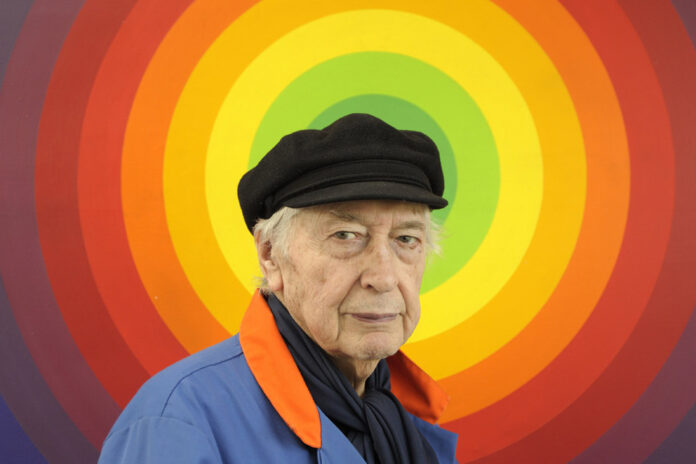Julio Le Parc
Julio Le Parc was born into a family of limited economic means. At age thirteen he moved with his mother and brothers to Buenos Aires.While there he attended the School of Fine Arts and showed growing interest in artistic avant-garde movement in Argentina. The School of Fine Arts is where Le Parc, along with fellow artists Hugo Demarco, F. García Miranda, Francisco Sobrino, Horacio García Rossi, Molnar, François Morellet, Sergio Mǫyano Servanes, Yvaral (Jean Pierre Vasarely), and Jöel Stein formed the Groupe de Recherche d’Art Visual, or GRAV.
A precursor of Kinetic Art and Op Art, founding member of Groupe de Recherche d’Art Visual and recipient of the Grand Prize for Painting at the 33rd Venice Biennale in 1966, Julio Le Parc is a major figure in modern art history. The socially conscious artist was expelled from France in May 1968, after participating in the Atelier Populaire and its protests against major institutions.
Julio Le Parc is an Argentine-born artist known for his contributions to the Op Art and Kinetic Art movements. He was born on September 23, 1928, in Mendoza, Argentina. Le Parc’s work is characterized by its exploration of light, movement, and perception.
Le Parc initially studied at the School of Fine Arts in Buenos Aires before moving to Paris in 1958, where he became a prominent figure in the burgeoning kinetic art scene. He co-founded the Groupe de Recherche d’Art Visuel (GRAV) in 1960, alongside other artists who shared his interest in exploring the visual effects of light and movement.
His artwork often features geometric patterns, optical illusions, and interactive elements that engage viewers in a dynamic and immersive experience. Le Parc’s installations and sculptures use various materials and techniques to create mesmerizing visual effects that challenge the viewer’s perception.
One of his most famous works is “Continuel-Lumière” (1962), a series of rotating light sculptures that create ever-changing patterns and colors. Another notable piece is “La Longue Marche” (1974), a large-scale installation composed of reflective elements that multiply and distort the viewer’s image as they move through the space.
Julio Le Parc’s contributions to the world of art have earned him international recognition, and his works are held in prestigious museum collections around the world. He has been honored with numerous awards and exhibitions, solidifying his legacy as a key figure in the Op Art and Kinetic Art movements.
Please note that my knowledge is current up until September 2021, and there may have been developments or events related to Julio Le Parc since that time.




